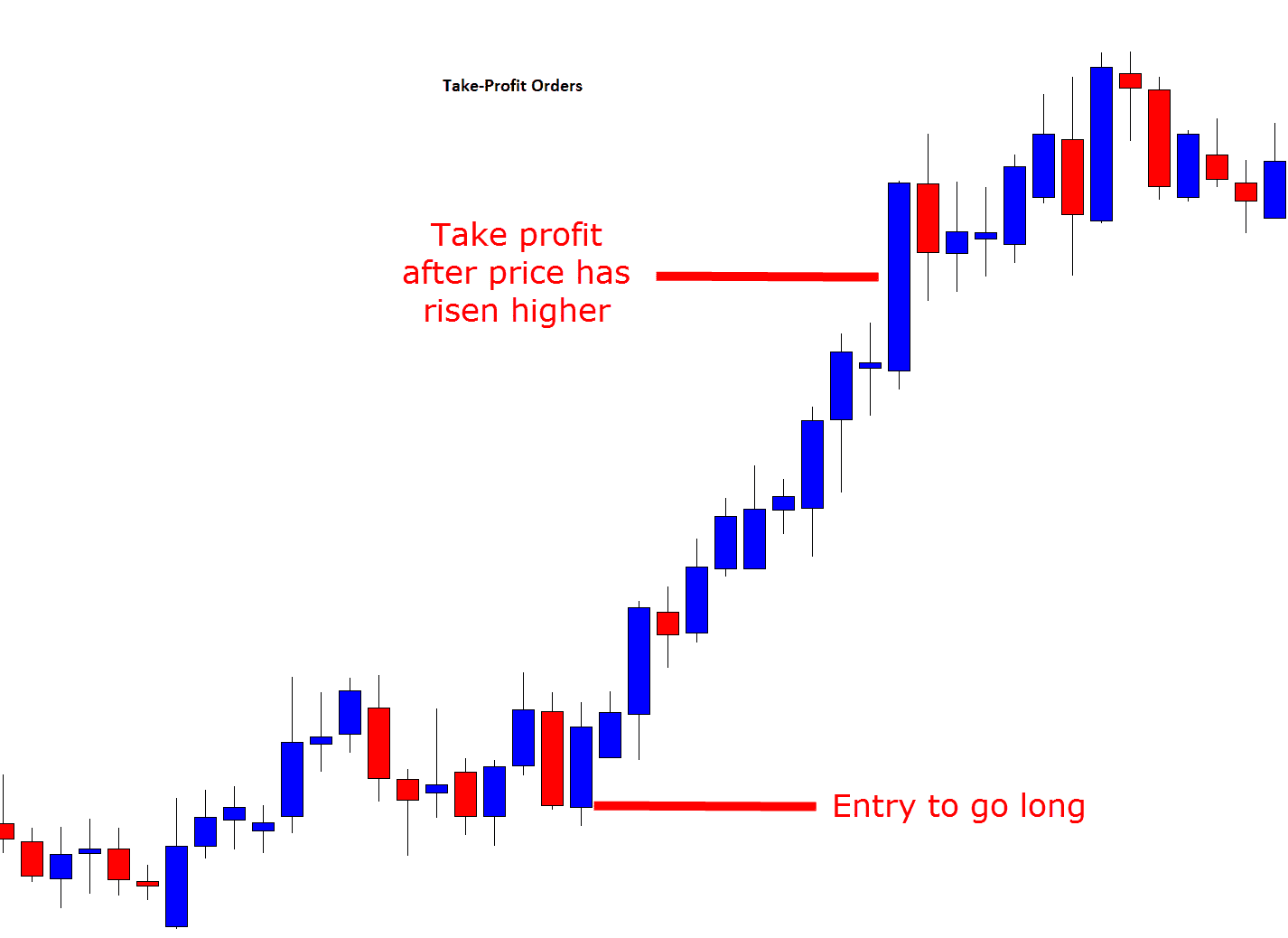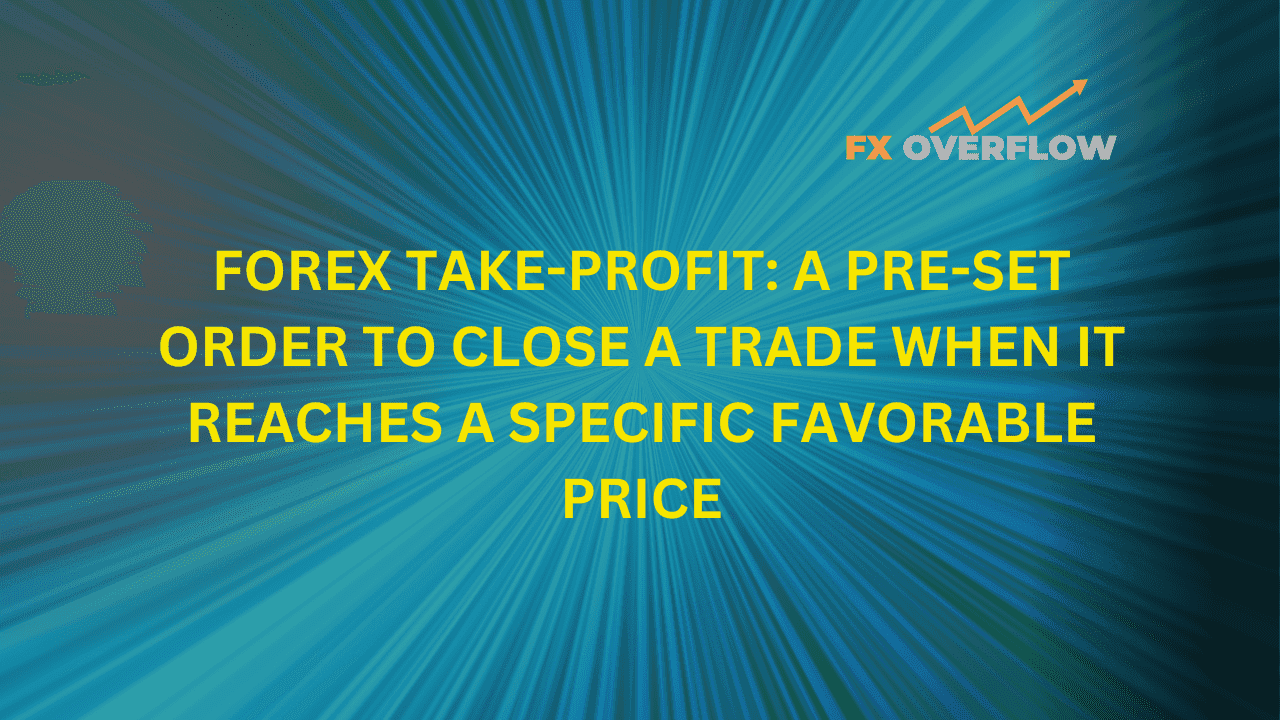Forex Take-Profit: A Pre-Set Order to Close a Trade When It Reaches a Specific Favorable Price
In the fast-paced world of Forex trading, making informed decisions at the right moment can make all the difference. One essential tool that traders use to secure profits and manage risk is the Forex take-profit order. By setting a specific favorable price at which a trade will be closed automatically, traders can lock in gains and protect their investments.
In this comprehensive guide, we'll delve into the concept of Forex take-profit, its importance, and how you can effectively incorporate it into your trading strategy. Whether you're a seasoned trader or just starting, this article will equip you with the knowledge and insights you need to succeed in the dynamic world of Forex trading.
Table Content
1. Understanding Forex Take-Profit
2. The Role of Forex Take-Profit in Trading
3. Tips for Setting Effective Forex Take-Profit Levels
4. Different Types of Take-Profit Orders
5. Common Mistakes to Avoid
6. FAQs
7. Footnote
Understanding Forex Take-Profit
At its core, a Forex take-profit order is a pre-set instruction given by a trader to their brokerage platform. When the price of a traded instrument reaches a specified level, the trade is closed automatically, securing the profits at that favorable price. This automated process helps traders avoid emotional decision-making and ensures that they capture gains when the market moves in their favor.

The Role of Forex Take-Profit in Trading
Forex take-profit orders play a crucial role in risk management and trade optimization. Here are some key reasons why they are essential:
1. Secure Profits and Minimize Losses
By setting a take-profit level, traders can lock in profits before the market reverses. It eliminates the need for constant monitoring and enables traders to focus on other opportunities.
2. Remove Emotional Bias
Emotions can cloud judgment, leading to impulsive decisions. Using take-profit orders ensures that trades are executed based on predetermined strategies, not emotional reactions.
3. Optimize Trading Strategies
Take-profit levels can be integrated into various trading strategies, such as trend-following or breakout strategies, enhancing their effectiveness.
4. Enhance Risk-Reward Ratio
A well-placed take-profit order allows traders to define their risk-reward ratio clearly, enabling them to assess potential gains against potential losses.
5. Time Management
With take-profit orders in place, traders can better manage their time, allowing them to focus on analyzing new trading opportunities and improving their overall trading skills.
Tips for Setting Effective Forex Take-Profit Levels
Setting the right take-profit level is critical for maximizing profitability. Here are some tips to help you make informed decisions:
1. Analyze Market Trends
Use technical analysis tools to identify support and resistance levels, trends, and potential price targets. These insights can guide you in setting appropriate take-profit levels.
2. Factor in Volatility
Consider the volatility of the currency pair you are trading. Higher volatility may require wider take-profit levels to accommodate price fluctuations.
3. Leverage Trailing Stops
Consider using trailing stops in conjunction with take-profit orders. Trailing stops automatically adjust the take-profit level as the trade moves in your favor, locking in profits while allowing room for further gains.
4. Set Realistic Targets
Avoid setting take-profit levels too close to the entry point, as this might result in premature exits. Base your targets on reliable data and avoid overly ambitious expectations.
5. Adapt to Market Conditions
The Forex market is dynamic, and conditions can change rapidly. Be prepared to adjust your take-profit levels as market conditions evolve.
Different Types of Take-Profit Orders
Forex take-profit orders come in various forms, each serving a specific purpose. Familiarize yourself with these types to use them effectively:
1. Limit Take-Profit Order
A limit take-profit order is executed when the market price reaches the specified level or a more favorable price. It ensures that profits are locked in but not at a worse price than desired.
2. Market Take-Profit Order
A market take-profit order is executed at the best available price when the specified level is reached. While this guarantees execution, it may not secure the exact desired price.
3. Trailing Take-Profit Order
A trailing take-profit order automatically adjusts the take-profit level as the market price moves in your favor. It allows you to capture additional gains during strong trends.
4. Time-Based Take-Profit Order
A time-based take-profit order sets a specific timeframe within which the trade should reach the desired price. If the price is not reached within the timeframe, the order expires.
Common Mistakes to Avoid
Even with a well-planned take-profit strategy, traders can fall into common traps. Here are some mistakes to avoid:
1. Ignoring Risk Management
While take-profit orders protect gains, it's essential to manage risks effectively as well. Overleveraging and improper risk assessment can lead to significant losses.
2. Chasing Unrealistic Targets
Avoid chasing overly ambitious profit targets that aren't based on solid analysis. Unrealistic expectations can lead to frustration and poor decision-making.
3. Neglecting Market Conditions
Market conditions can change rapidly, and a take-profit strategy that worked previously may not be effective in current conditions. Stay adaptable and adjust your approach as needed.
4. Forgetting to Cancel Expired Orders
If you're using time-based take-profit orders, remember to cancel them if the desired price is not reached within the specified timeframe.
5. Emotional Trading
Don't let fear or greed dictate your actions. Stick to your trading plan, including take-profit levels, and avoid impulsive decisions.
FAQs
Q: How do I set a Forex take-profit order?
Setting a Forex take-profit order is straightforward. When placing a trade on your brokerage platform, you'll have the option to set a specific take-profit level. Simply enter the desired price, and the platform will execute the order automatically when the price is reached.
Q: Can I change my take-profit level after placing the trade?
Yes, most brokerage platforms allow you to modify your take-profit level after placing a trade. However, it's essential to do this based on informed analysis and not emotional reactions.
Q: Is a take-profit order guaranteed to be executed?
While take-profit orders aim to close trades at specific prices, execution depends on market conditions. During highly volatile periods, there might be slippage, and the actual execution price may differ slightly from the specified level.
Q: How can I use trailing stops with take-profit orders?
To use trailing stops with take-profit orders, set a trailing stop value in addition to the take-profit level. The trailing stop will follow the price movement, locking in profits as the trade moves in your favor.
Q: Should I always use take-profit orders?
While take-profit orders offer benefits, they may not be suitable for all trading strategies. Consider your risk tolerance, market conditions, and overall trading plan before using take-profit orders consistently.
Q: Can take-profit orders be canceled?
Yes, you can cancel take-profit orders before they are executed. Most brokerage platforms allow you to manage and adjust your orders as needed.
Footnote
In the dynamic world of Forex trading, a well-placed take-profit order can be the key to success. By understanding the concept of Forex take-profit, the different types of orders available, and best practices for setting effective take-profit levels, you can optimize your trading strategies and enhance profitability.
Remember to always base your decisions on solid analysis and avoid emotional trading. Use take-profit orders as part of a comprehensive risk management plan to safeguard your gains and achieve your financial goals in the Forex market.











Discussion